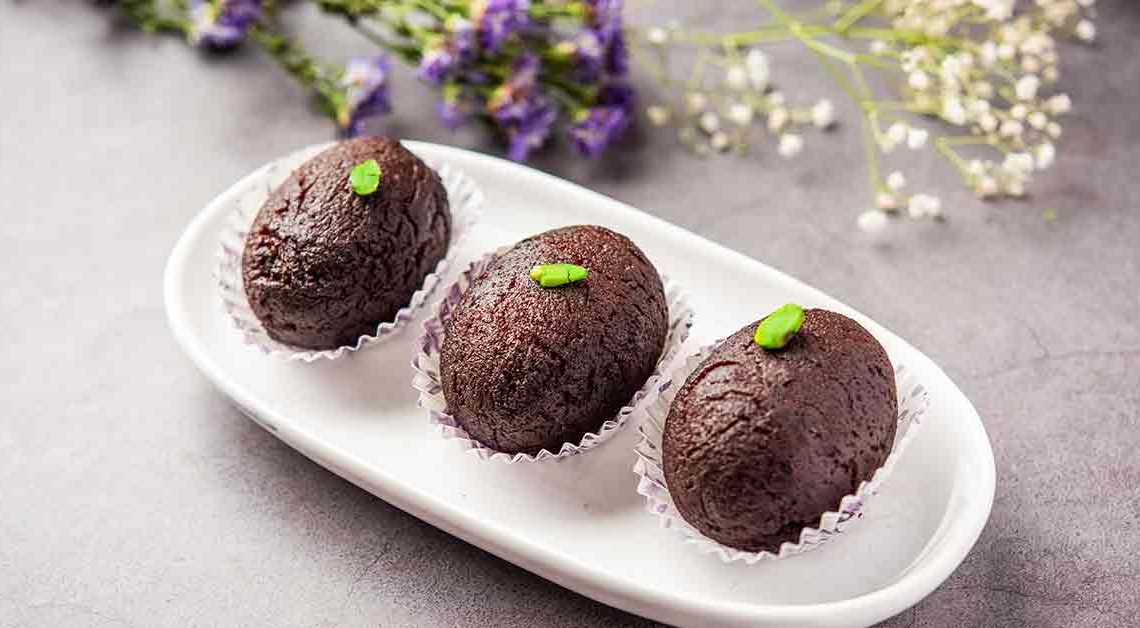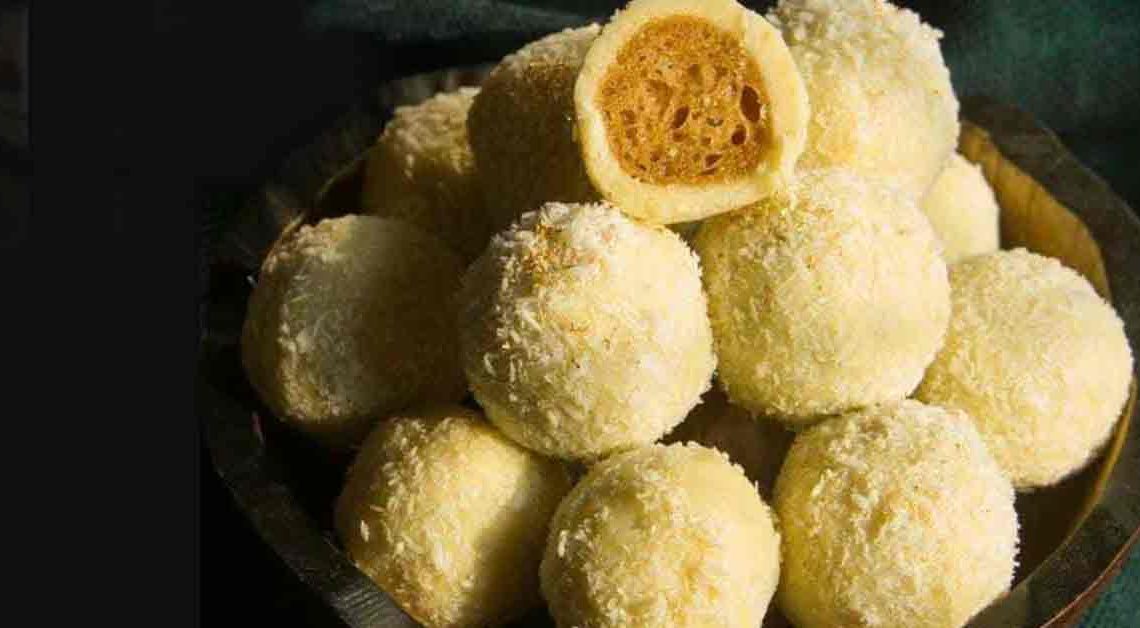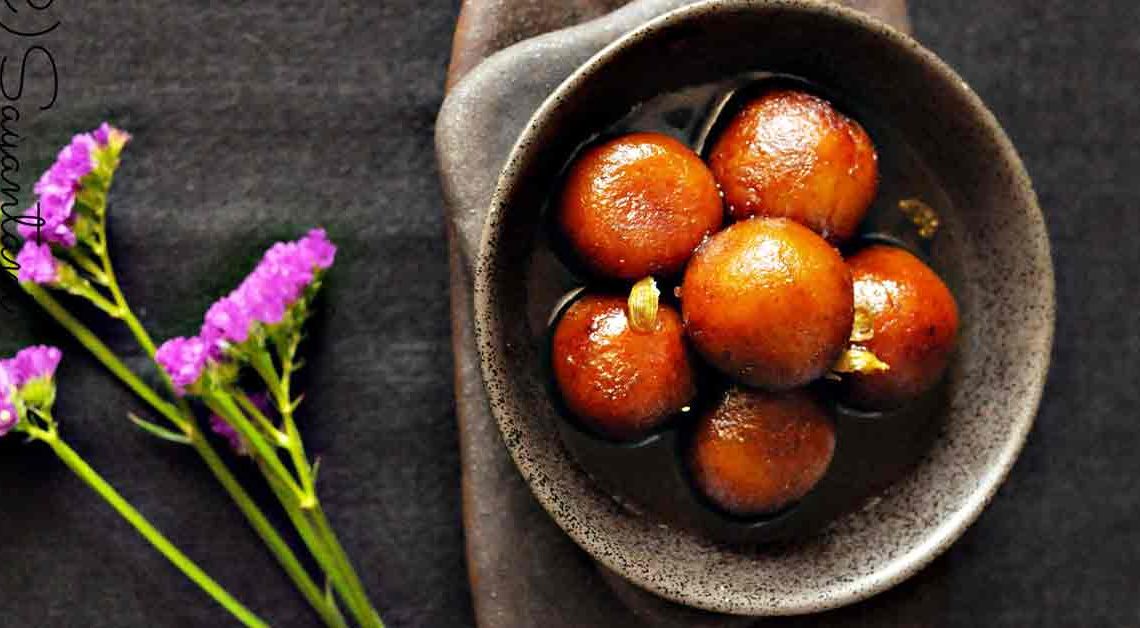Sweeten Your Taste Buds with Kala Gulab Jamun

Welcome to our culinary journey where we explore the enchanting world of desserts on Mithainama! Today, we dive into the realm of Indian sweets to uncover the hidden gem known as “Kala Gulab jamun.” Brace yourself for a treat that will transport your taste buds to a whole new level of indulgence.
Picture this: a sizzling hot, deep-fried dumpling, boasting a striking ebony hue, gracefully soaked in a velvety syrup, and delicately dusted with a touch of gold. This is the mysterious allure of Kala Jaam, an extraordinary variation of the beloved traditional Indian dessert.
But where does this delectable delight come from? Its origins can be traced back to the royal kitchens of Mughal emperors, where skilled artisans experimented with flavors and techniques to create desserts fit for kings and queens. Over time, this exotic treat found its way into the hearts and homes of people across the Indian subcontinent, and it has become a true symbol of celebration. Get ready to awaken your sweet tooth and embark on a journey that will forever change your perception of Indian sweets.
Origin of Kala Gulab Jamun
The origin of it can be traced back to the Mughal era, a period of rich cultural and culinary exchange in India. The Mughals, known for their extravagant lifestyles and love for fine cuisine, greatly influenced the development of Indian desserts.
The classic Gulab jamun, a round milk-solid-based sweet soaked in sugar syrup, was already popular during this time. However, the introduction of it brought a unique twist to this beloved dessert.
Kala Gulab jamun, also known as Kala Jamun or Kala Jaam, stands out due to its distinctive dark color. The deep ebony hue is achieved by adding a small amount of edible charcoal or black food coloring to the dough. This variation adds an element of surprise and intrigue to the traditional Gulab jamun.
The inspiration behind Kala Jaam is believed to have come from the culinary innovations and experimentation of the Mughal chefs. They constantly sought to create visually stunning and decadent dishes fit for royalty.
History of Kala Gulab Jamun
The history of it is intertwined with the rich culinary traditions of India, particularly the Mughal era. While the exact origin story may be elusive, it is believed that this unique variation of Gulab jamun emerged during this period of cultural exchange and gastronomic innovation.
The Mughals, who ruled parts of the Indian subcontinent from the 16th to the 18th century, were known for their opulent lifestyles and love for fine cuisine. They brought with them a refined culinary sensibility and introduced Persian and Central Asian influences to Indian cooking.
Over time, it has gained popularity and became a sought-after delicacy for special occasions, festivals, and celebrations. The unique color and distinctive taste of this dessert made it stand out among other traditional sweets.
Cultural Significance
Its unique appearance and rich flavors make it a sought-after dessert that carries deep cultural connotations. Here are some aspects of its cultural significance:
Festivals and Celebrations: It is often associated with joyous festivities such as Diwali, Eid, weddings, and other celebratory occasions. It symbolizes abundance, sweetness, and the spirit of togetherness. Serving Kaala Gulabjamun during these events is a way to enhance the festive atmosphere and treat guests to a delightful culinary experience.
Traditional Cuisine: It is an integral part of Indian traditional cuisine, showcasing the rich diversity and culinary heritage of the country. It represents the fusion of Mughal influences with indigenous Indian flavors, reflecting the cultural amalgamation that has shaped the cuisine over the centuries.
Culinary Artistry: The preparation of Kala Jaam requires skill and craftsmanship. It involves meticulously shaping the dough, achieving the perfect texture, and infusing it with aromatic flavors. The dessert showcases the mastery of Indian chefs and their ability to create visually appealing and palatable delicacies.
Where is Kala Gulab Jamun Famous?
It is famous and widely enjoyed throughout India. It can be found in sweet shops, dessert parlors, and restaurants across the country. However, it is especially popular in regions with a strong Mughlai culinary influence, such as North India and parts of Uttar Pradesh.
Cities like Delhi, Lucknow, Agra, and Hyderabad are known for their delectable Kala Jaam preparations. These cities have a rich culinary heritage, and their traditional sweets, including Kala jamun, are sought after by locals and tourists alike.
Interesting Facts and Trivia
Certainly! Here are some interesting facts and trivia related to Kala Gulab jamun:
- It is believed to have originated during the Mughal era in India. The Mughals, known for their love for exquisite cuisine, brought Persian and Central Asian influences to Indian cooking, leading to the creation of unique and innovative dishes like Gulab jamun.
- The distinctive black color is achieved by adding edible charcoal or black food coloring to the dough. This creates a visually striking contrast to the traditional golden-colored Gulab jamun.
- It is often infused with aromatic flavors like cardamom and saffron. These spices add a delightful fragrance and enhance the overall taste experience of the dessert.
- Crafting the perfect shape requires skill and precision. Experienced chefs carefully shape the dough into small round balls, ensuring they are smooth and uniform in size.
- Similar to regular Gulab jamun, Kala Jam is soaked in a fragrant sugar syrup after frying. The syrup adds sweetness and moistness to the dessert, creating a luscious texture.
Did You Know?
Did you know that Kala Gulab jamun, besides being a delectable treat, offers some surprising health benefits when consumed in moderation?
- It is made primarily from khoya (milk solids) and flour, which provide a rich source of carbohydrates. These carbohydrates convert into energy, making it an excellent choice for a quick energy boost.
- It contains essential nutrients like calcium, protein, and vitamins from the milk solids. Calcium is vital for maintaining strong bones and teeth, while protein supports muscle development and repair.
- The spices used in Kala Jaam, such as cardamom and saffron, are known for their antioxidant properties. Antioxidants help combat free radicals in the body and protect against cell damage.
- Indulging in a serving of Kala jaam can provide a sense of happiness and pleasure. It triggers the release of endorphins, which are natural mood enhancers, and can uplift your spirits.
- Food has a significant emotional connection, and enjoying it can evoke nostalgic memories and a sense of cultural heritage. Sharing this dessert with loved ones during festive occasions fosters a sense of togetherness and joy.







